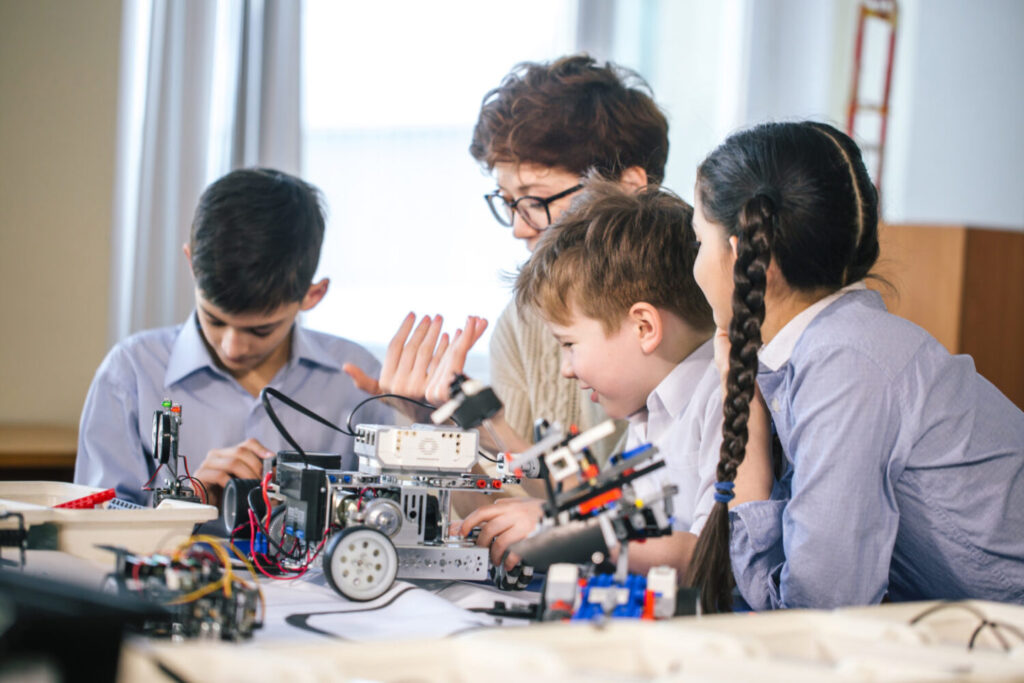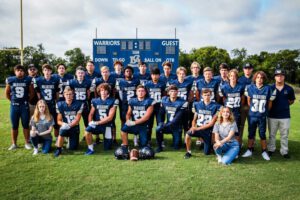Innovative St. Louis Catholic School Teacher Honored for Excellence in STEM
An engineer turned middle school teacher at a Catholic school in St. Louis, MO has been nationally recognized with the PLTW Outstanding Teacher award. The annual award is given to teachers who go…

An engineer turned middle school teacher at a Catholic school in St. Louis, MO has been nationally recognized with the PLTW Outstanding Teacher award. The annual award is given to teachers who go above and beyond to empower their students in STEM subjects (Science, Technology, Engineering, Mathematics). The Lion spoke with the teacher, Michael Herries, about receiving the award.
Herries said that the award “truly was a big deal to me.” Being a former engineer who was fortunate enough to retire early after plenty of success, he said the decision to teach had little to do with finances. He came out of retirement to pour into the next generation of kids interested in STEM-related subjects.
Notably, Herries’ classes are not limited to just STEM at St. Francis of Assisi School. He actually teaches 6-8th grade STREAM—the ‘R’ and ‘A’ represent Religion and Arts, respectively. In addition to their classes and daily mass, the students must learn how to collaborate, work in teams, problem-solve, and operate in kindness. They learn how to be intelligent, critical thinkers without skimping on integrity.
Herries sees no conflict between teaching his students the depths of science, for which he has been recognized, and instructing them in their faith. He explained, “When people see a conflict between God and science, I always say, ‘Well that’s not the God I know.’ I tell the students all the time that God created the greatest supercomputer of all time between your ears. Science still hasn’t caught up to His design.”
He continually asserts that understanding both the faith side and the science side matters immensely. In doing both, Michael is confident that the education these students receive is not behind the times but quite the opposite. It is a cutting-edge education that empowers students with 21st-century skills.
When discussing examples of STEM-related classroom success, Herries talked about his students. He described how before COVID-19 was really in the news in January of 2020, his Medical Detectives class supplemented their usual study of E. coli, rotavirus, and other viruses and diseases with an in-depth study of the COVID data available. By the time the shutdowns kicked in March, his students had a stronger grasp on the data regarding COVID than most American adults.
In another example, the 6th Grade Design and Modeling Class was tasked with coming up with new designs for ankle braces. Herries brought in a local Doctor of Occupational Therapy as a design consultant. She was amazed at what these 6th graders had accomplished. Later, when she solved an ankle-related problem in her medical work, a colleague asked how she thought to arrange the solution the way she did. She explained that she came across the answer from watching this class of 6th graders.
Of the teaching award, Herries says, “It was definitely humbling to see people appreciate the effort,” especially when he got the chance to read some of the letters of recommendation written by his students. He joked that it was definitely more fulfilling than the occasional “Good Job” commendations he received as an engineer. He remains thankful for his past experiences, but cherishes the opportunity to mold young minds. “These kids are our future,” he added.



